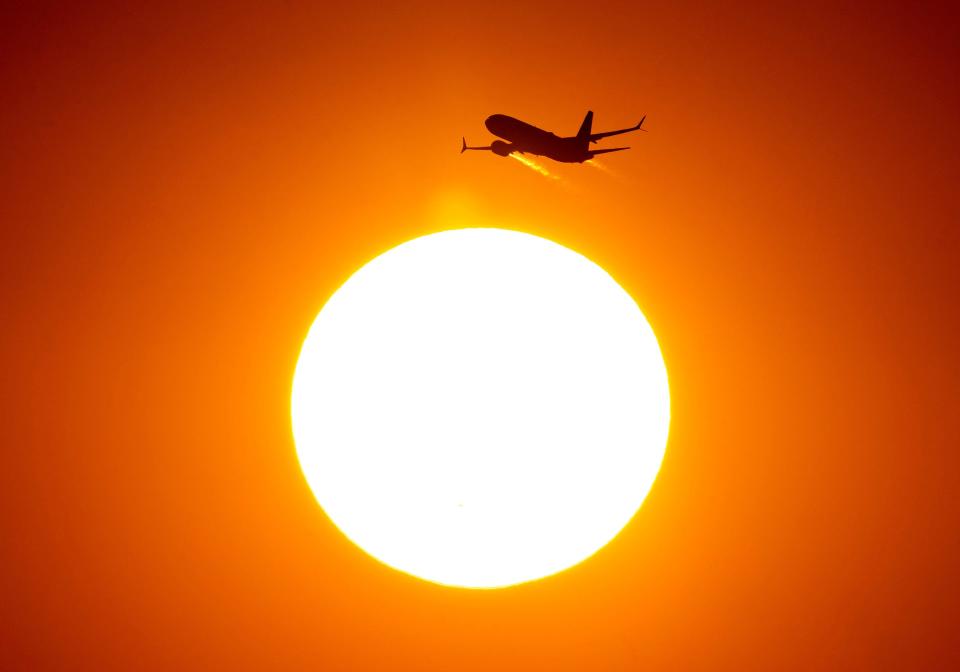Can it be too hot to fly? How summer weather can affect your travel plans.
Flight disruptions loom on the horizon as temperatures rise.
Summer is a busy travel season, but it’s also marked by unpredictable weather and travel delays that are often out of the airlines' control.
Two major factors contribute to this flying unpredictability: more frequent storms and, in extreme cases, hot temperatures that make it impossible for some planes to take off and land.
Higher temps can also make it uncomfortable while waiting to board your flight.
With summer upon us, here’s what to expect when it comes to air travel and the weather.
Weather is behind nearly two-thirds of flight disruptions
According to the Federal Aviation Administration, 63% of flight delays are a result of weather conditions.
“The FAA’s job is to get travelers to their destination safely and efficiently. This summer will see more planes in the skies, frequent bad weather, and increased use of the nation’s airspace. We are continuously working to address these challenges,” a statement from the agency said. “Our summer travel website outlines initiatives we’ve taken to keep summer traffic safe and smooth.”
Airlines’ southern hubs can be especially prone to storm and heat disruptions during the summer.
“While we can’t control the weather – which is the number one reason for delays – we plan for and work around convective conditions,” FAA Administrator Mike Whitaker said in a statement. “To improve safety and enhance efficient operations on the runway, we are installing innovative new surface surveillance technologies at airports around the nation.”

Extreme heat can make flying impossible
As global temperatures rise, storms aren’t the only thing affecting flights.
“When air is hot, it becomes less dense due to air molecules spreading out,” Bob Thomas, assistant professor of Aeronautical Science at Embry‑Riddle’s Daytona Beach Campus said in a post on the school’s website. “Hot air is thin air. While this reduces the lift on which planes rely for takeoff, the main impact is felt on engine thrust. Aircraft engines will produce less thrust during takeoff and ascent as a result,” which makes it harder for them, and sometimes impossible to take off.
High heat can lead to extra weight restrictions for some planes at some airports, which can mean needing to bump some passengers. Extreme temperatures can even result in airlines canceling some flights altogether.
Cruising Altitude: Flight delayed or canceled? How to get ahead of it.
How hot is too hot for airplanes?
Most mainline Airbus and Boeing jets can take off safely up to 122 degrees or so. Smaller regional jets often have a lower threshold for safe operations. But the exact limits depend on a variety of factors, including the plane’s total weight, the altitude of the airport and other conditions.
How you can plan ahead
The safest bet is to take the first flight of the morning. That’s when temperatures are typically lowest, and also the least likely time of day for airlines to experience knock-on delays from earlier disruptions.
It’s also usually a good idea to avoid connecting in airports that are especially susceptible to summer weather delays if possible. The rule of thumb is often: Connect through northern airports in the summer and southern airports in the winter.
Zach Wichter is a travel reporter for USA TODAY based in New York. You can reach him at zwichter@usatoday.com.
This article originally appeared on USA TODAY: How high temps and strong storms can cause flight disruptions


